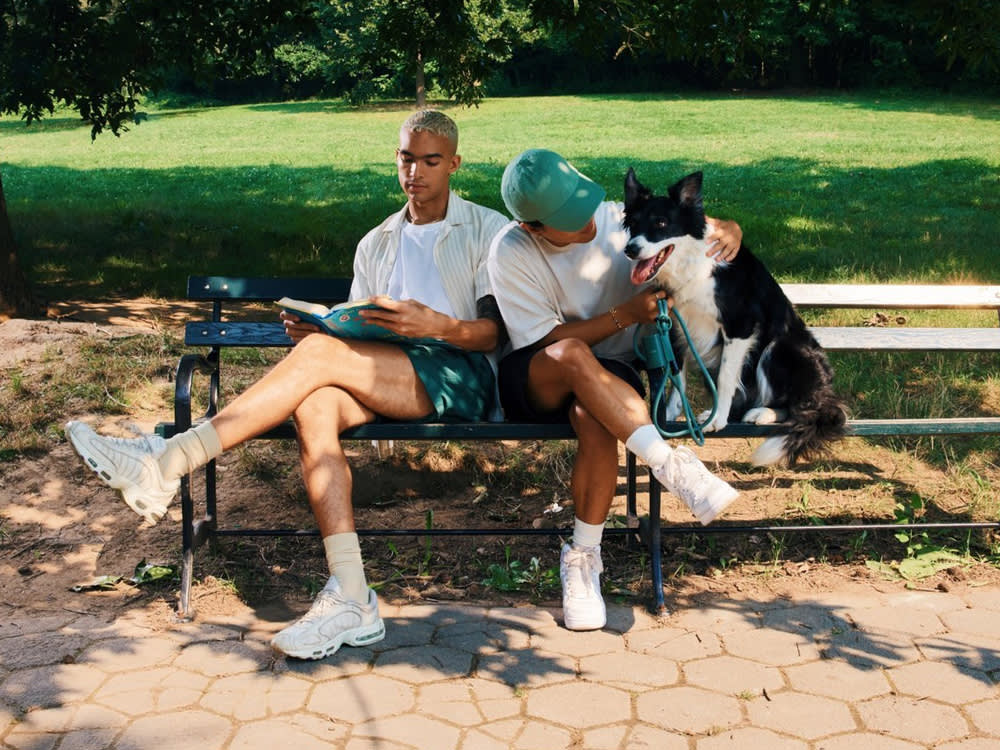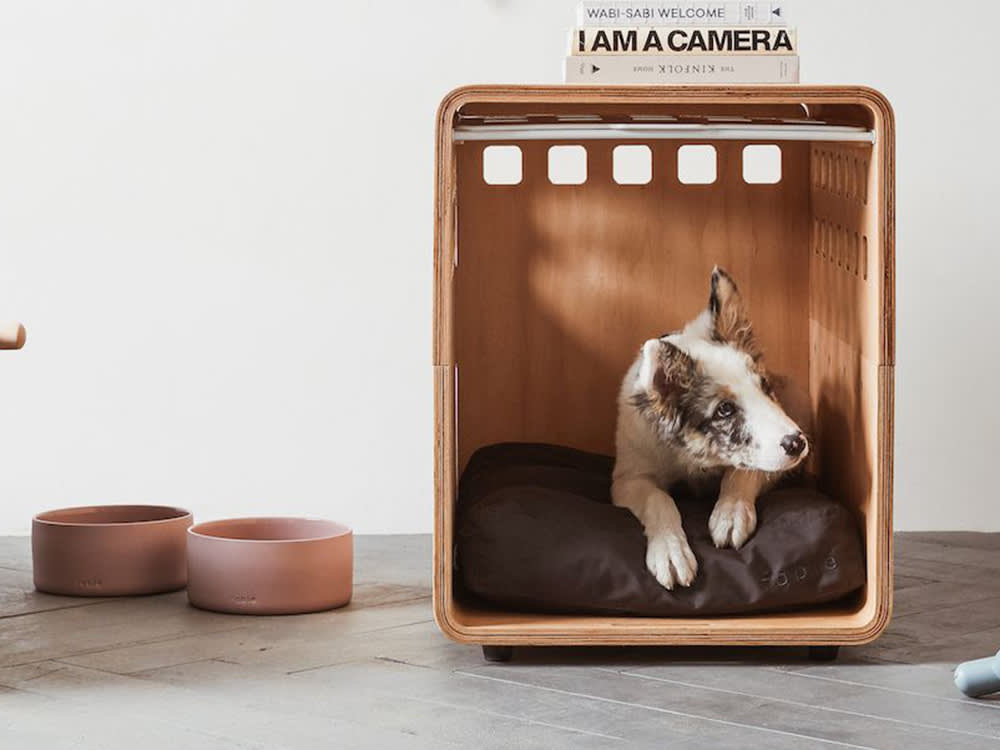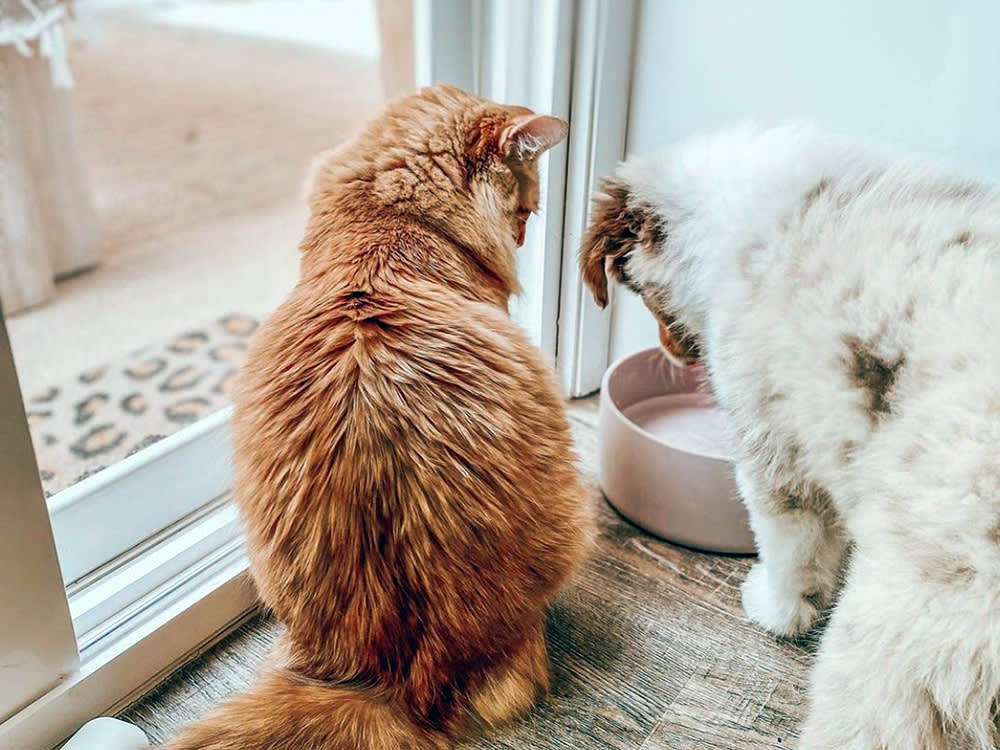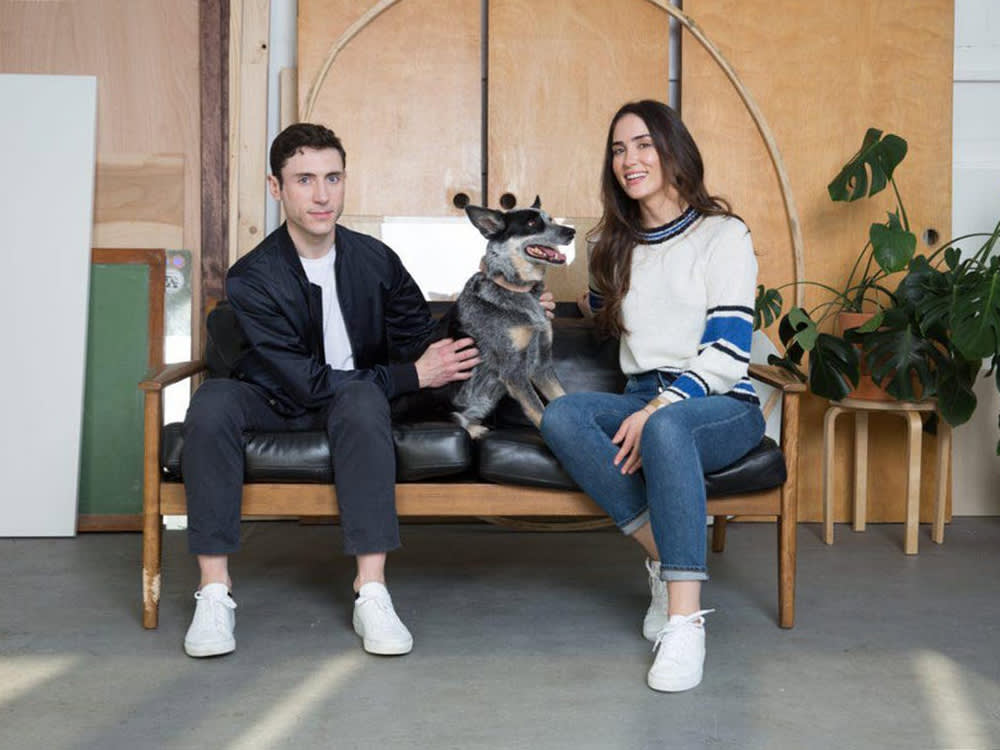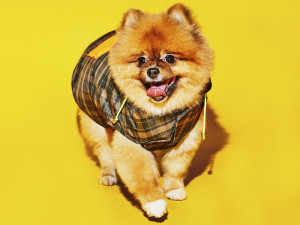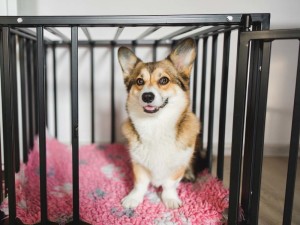Every Imaginative Product Fable Makes Has a Story
The brand’s founders design elevated pet essentials, from a sustainable-wood crate to a game-changing toy to a hands-free leash.

share article
As a new pet parent, the world of pet gear can feel like it’s full of booby traps. Faulty retractable leashes, toys that break into a million little choking hazards, and contradicting advice about what food is best can create a rather overwhelming frenzy of judgment calls to make as you try your best to furnish your pup’s world. When the worries about safety subside, there’s still no shortage of irritation to be found in the slews of accessories that fail to align with contemporary style.
Fable Petsopens in a new tab aims to address all this. Products like The Gameopens in a new tab, an interactive toy that dispenses food piece by piece as dogs swat at it; their gorgeous bent wood crateopens in a new tab, which doubles as a side table; and The Magic Linkopens in a new tab, a leash that can be worn around the waist or as a sash for a hands free walk, all aim to intuitively solve the problems pet owners around the world are faced with. We chatted with co-founder Jeremy Canade about what inspired him and his sister, Sophie Bakalar, to create Fable — from designs drawn on napkins to lessons learned from their own pets.
Tell me about your dog!
His name is Ranger and he’s a Border Collie, so he doesn’t like it when I’m not paying him attention at any moment. I’ve had him for a little over three years.
Did Ranger inspire any Fable products?
Definitely The Game. I mean, he’s staring at me right now and has put all his toys at my feet because he wants me to throw something — and because I forgot to fill his Game before the call. So one of the things on my hit list was [designing] a toy that he would play with independently for a little while and keep him entertained.
I tried a bunch of other [interactive] products, but he would slam them against the wall — it was like a bowling ball knocking around my apartment, and just for a tiny piece of food [to fall out]. There was a horrible noise any time it happened. Plus, he is a very smart dog and can get through [a puzzle toy] within five minutes, so it wasn’t really a distraction. So that was the bar: it had to be quieter and last at least half an hour for him — and everything we make has to look good, at least in my eyes. It took a lot of iterations [and 411 safety tests] but I’m pretty happy with how it turned out.
A lot of your products, like the magic leash and crate, are reimaginings of essentials that have been stuck in the same framework forever. How did you approach redesigning these items?
Yeah, each one is unique. There’s a different path depending on a number of factors, especially whether it’s an out-of-home product or an at-home product, and how much of a bar we have for clearing on the technical and mechanical side. But I think each one we try and say: What is a pain point? What’s an inconvenience? What’s a challenge of the experience of living with your dog?
One obvious one was just how super ugly crates were and how much space they take up. You have to think really critically about real estate in your apartment, especially in the city. That was low-hanging fruit — to have something that didn’t look like a huge wire crate or super tacky, dated furniture.
How do you develop something — your updated crate, for instance — once you figure out those pain points?
Sophie and I drew on a napkin essentially what we had what we envisioned. We took measurements across all the different sizings of the major brands of wire-crate makers and decided that it’s roughly the size of a side table. We’re not encouraging people to lock their dogs in a tiny little cage for hours on end — it’s meant to be a safe space. That’s how you’re supposed to train a dog in the first place; it’s supposed to be a refuge for their benefit and comfort. So, making a crate feel cozier is part of that.
We had a vision for how we wanted it to look — like curved edges to make it feel friendlier and warmer — then it was about solving technical problems like how do we sustainably, efficiently, and financially make it work to get that wood?
I love the funny dog cartoons all over the Fable website. What steps have you taken to make the brand feel approachable as a DTC company?
We’re not even scratching the surface of what we can do with the brand. I am super passionate about it. Everything we do, I try to think at least on a couple levels about it, and think holistically — even starting with the name. A fable is a moral tale, usually featuring animals, so there’s a lot that we can create around it. It’s literary and it’s visual at the same time, and any good story is about some kind of adventure. Your main characters are animals and they are going on adventures. There’s also a hearth and home element about storytelling around a fire.
Just thinking about animals and humans as a team that explores the world together, I think underpins everything. We worked with a cartoonist from The New Yorker for those drawings because we know our customers are smart, and while we wanted to do something playful, we also wanted them to be somewhat of a counterpoint to the tradition of infantilizing dogs. They do have roughly the intelligence of a two-year-old human, but they also are highly evolved, they’re athletes, and they have these very unique capabilities that are well beyond a fully realized adult. So it’s a different relationship, and we like to treat it as an adventuring pair — as a team.
What do you love about adventuring in the city with Ranger?
Companionship is the obvious answer but it definitely is [a major one]. I mean, city life can be lonely if you’re single. I think it’s a very fortifying relationship; you have somebody who’s at your side and with you through thick and thin. Especially the last two years — it would have been hell without him. Everyone who has a dog in the city remarks on how it’s great for meeting new people.
Living with a dog — I try to avoid saying that I “own” a dog because I see him as an individual and it feels weird to talk about him like a piece of property — makes you see things through different eyes, right? Like, you have to slow down with a dog. You have to walk with a dog; you have to force yourself to go outside with a dog. Especially in a big city, you very easily lose that — famously so. People get stuck in the grind and don’t live in the moment. But dogs only live in the moment.
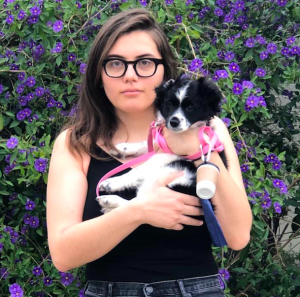
Rachel Davies
Rachel Davies is a writer who has written for numerous publications including Vox, Wall Street Journal, and Architectural Digest and the parent of a beautiful Cocker Spaniel mix named Thea.

